Do you want to feed bluebirds, but have no idea what foods they can safely eat other than seeds? Three different species of bluebirds live in North America. The Eastern Bluebird, Sialia sialis, lives mostly on the eastern half of the United States and southeastern Canada. The Western Bluebird, Sialia mexicana, lives through most of the western United States, southwestern Canada, and Mexico. And the Mountain Bluebird, Sialia currucoides, ranges mostly through the western United States and Canada, all the way to Alaska, wintering in Mexico. Though their ranges vary, their diets are quite similar. All bluebirds eat mainly insects, including grasshoppers, crickets, beetles, and others. They supplement their diet with seeds, berries and other fruits, particularly in the winter. Many people enjoy feeding bluebirds at feeders. Here is a list of common foods you can safely feed bluebirds other than seeds.
Mealworms
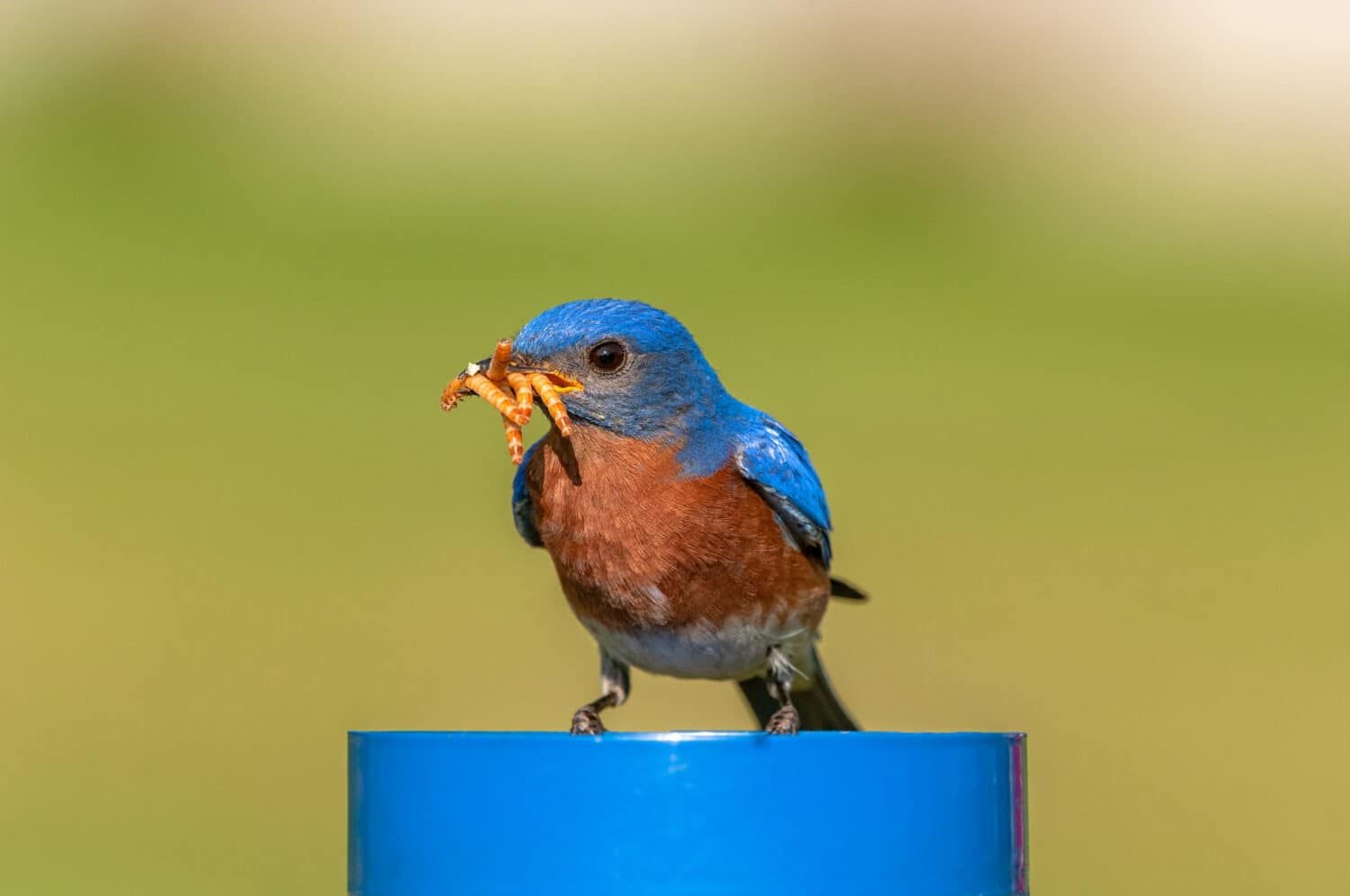
Bluebirds love mealworms perhaps best of any foods you might offer.
©Alan B. Schroeder/Shutterstock.com
Bluebirds love insects, and mealworms are no exception. You can purchase these darkling beetle larvae both live and dried at most pet stores. If offering live mealworms, make sure the container has smooth sides so the larvae cannot crawl out. If you choose to offer dried mealworms, consider soaking them in warm water for about 10 to 15 minutes before placing them in the feeder. The mealworms will plump up considerably and be more attractive to the birds.
Berries
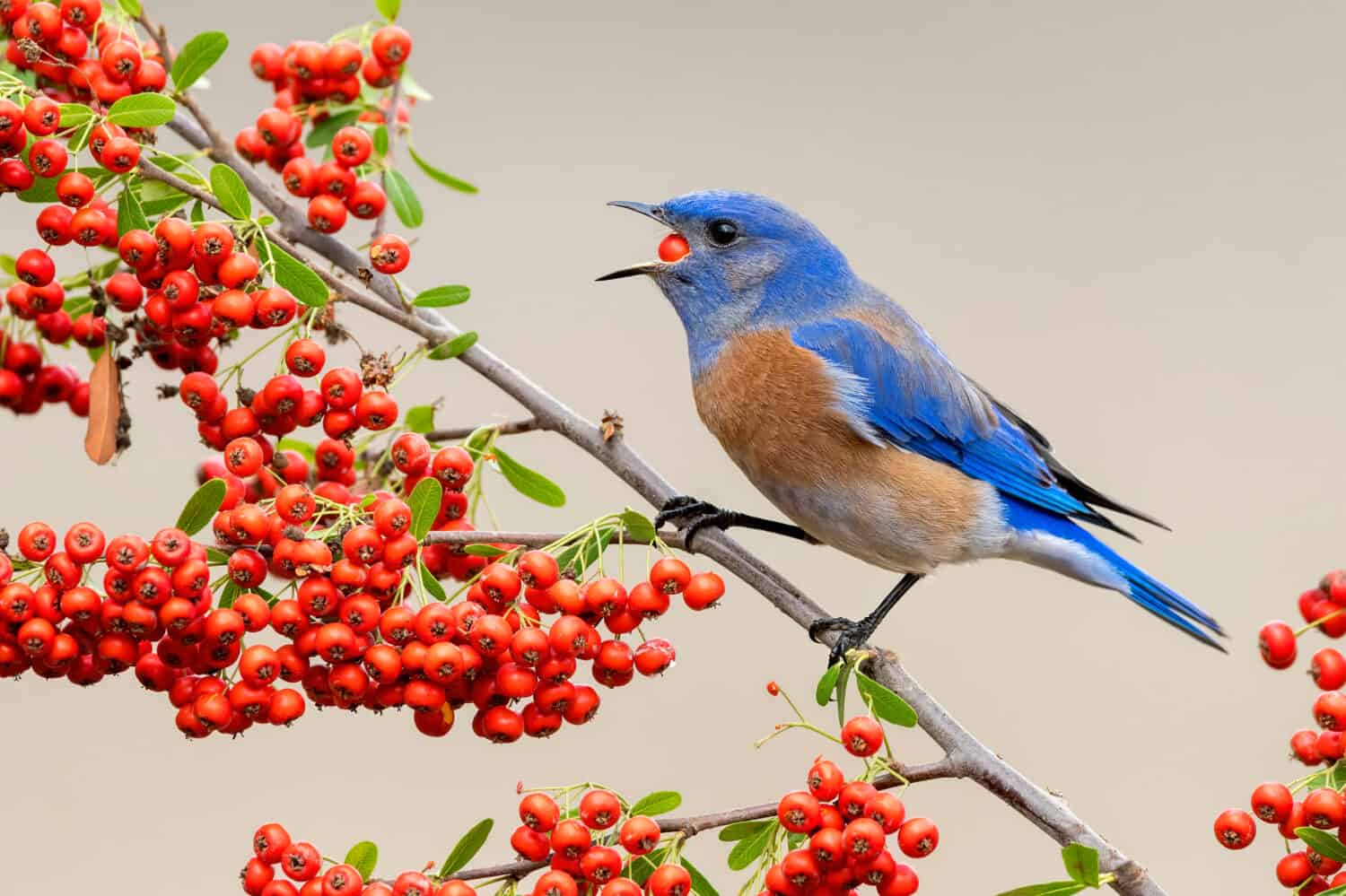
Bluebirds eat a lot of different types of berries, especially in the winter.
©Agami Photo Agency/Shutterstock.com
Bluebirds naturally eat a lot of different types of berries, including dogwood berries, juniper berries, hackberries, and even mistletoe berries. You can safely feed bluebirds just about any type of berry that you would eat. Consider offering blueberries, blackberries, raspberries, and cranberries. You might also think of planting bushes, shrubs, or trees that produce berries, especially in the winter.
Suet
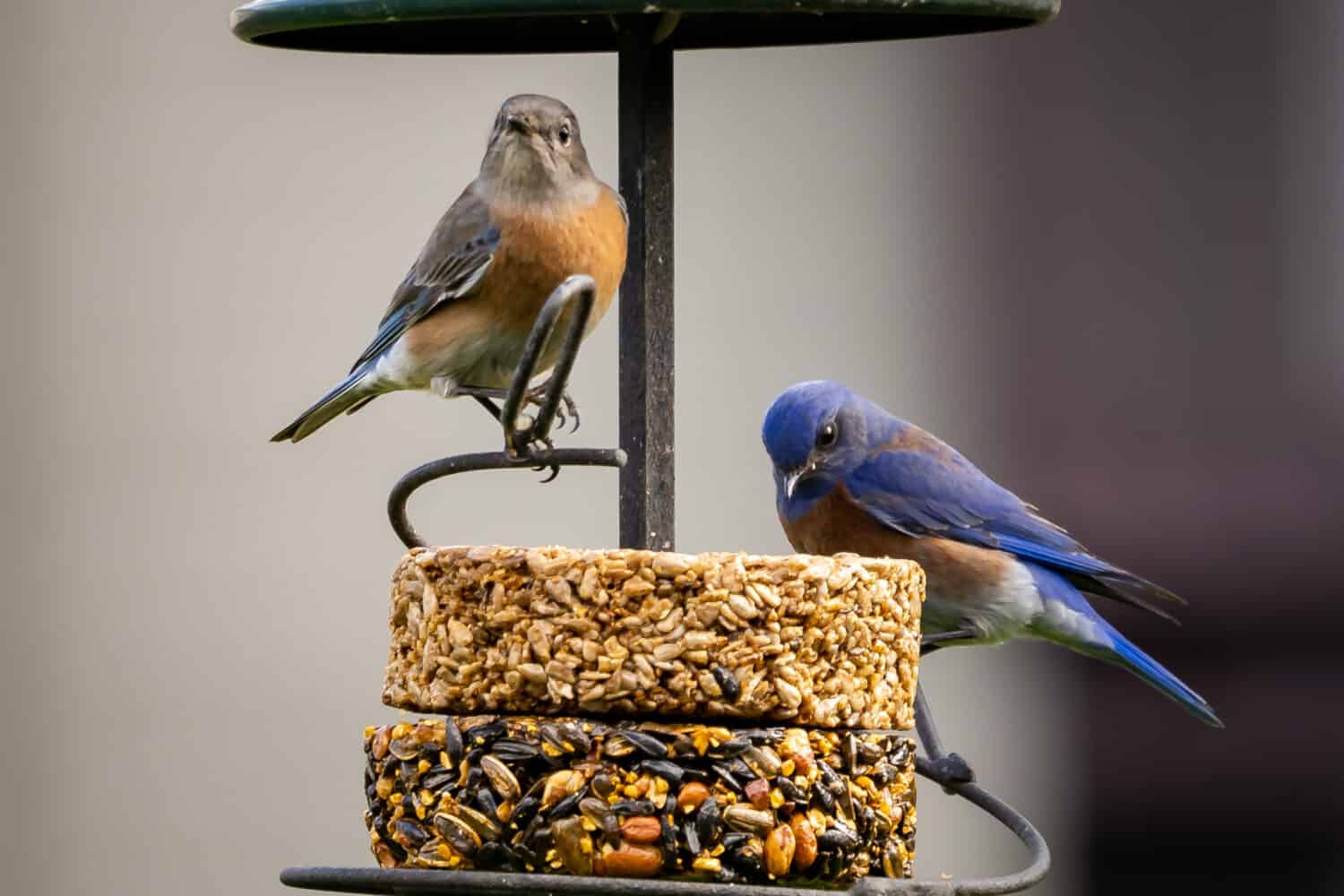
If offering suet, consider feeders that do not require bluebirds to feed while hanging.
©d murk photographs/Shutterstock.com
You can purchase many different types of suet, with a variety of different ingredients. Bluebirds can benefit from suet thanks to its abundant fat and protein. These birds normally obtain plenty of protein from the insects and other small animals they eat in warmer months. However, their diet may lack what they need in the winter. Consider offering suet in feeders that do not require birds to hang and feed. Bluebirds will appreciate it!
Fruits and Nuts
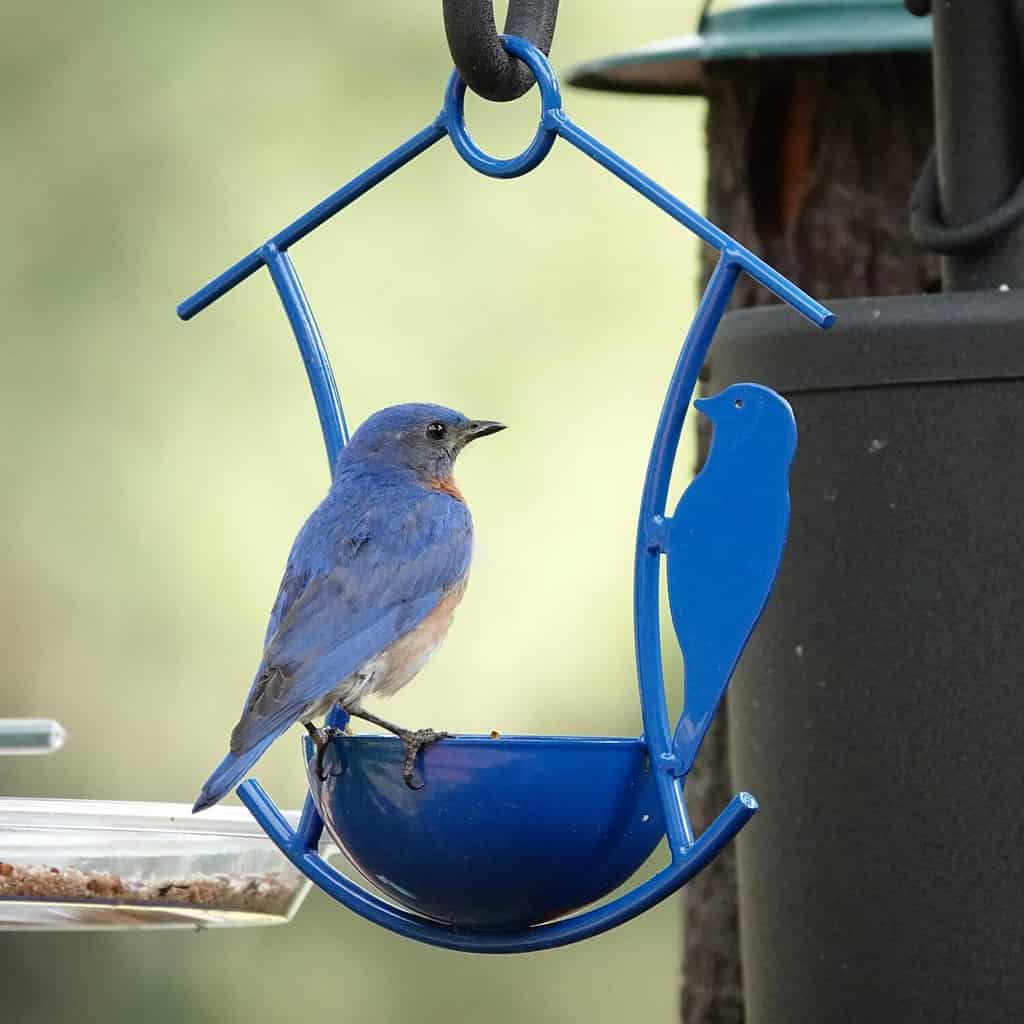
Dish or cup feeders work best for offering things like chopped fruits and nuts.
©Chris Klonowski/Shutterstock.com
You can offer bluebirds a variety of chopped fruits and nuts, preferably in a dish or cup feeder. They will eat small chunks of fruits such as apples and pears. You can offer dried fruits such as raisins and cranberries. They will even eat some nuts, such as chopped peanuts without the shell. Try not to offer salted nuts, as bluebirds do not need added salt in their diet.
Peanut Butter
Some backyard birdwatchers swear by offering peanut butter to bluebirds. They have a special way pf presenting the treat, though. Because bluebirds do not prefer to hang and feed, peanut butter may best be offered by smearing a little bit on a tree trunk at ground level. Don’t apply too much, as you don’t want to draw pests. Maybe just try a little bit near an existing bluebird feeder to see if they notice and approve.
Commercial Treats
Some companies make treats specifically formulated for bluebirds. They include nuggets and pellets with ingredients such as peanut butter, insect parts, and other sources of protein and fat. If marketed for feeding wild birds such as bluebirds, these treats are generally safe, at least in moderation.
Insects or Small Animals
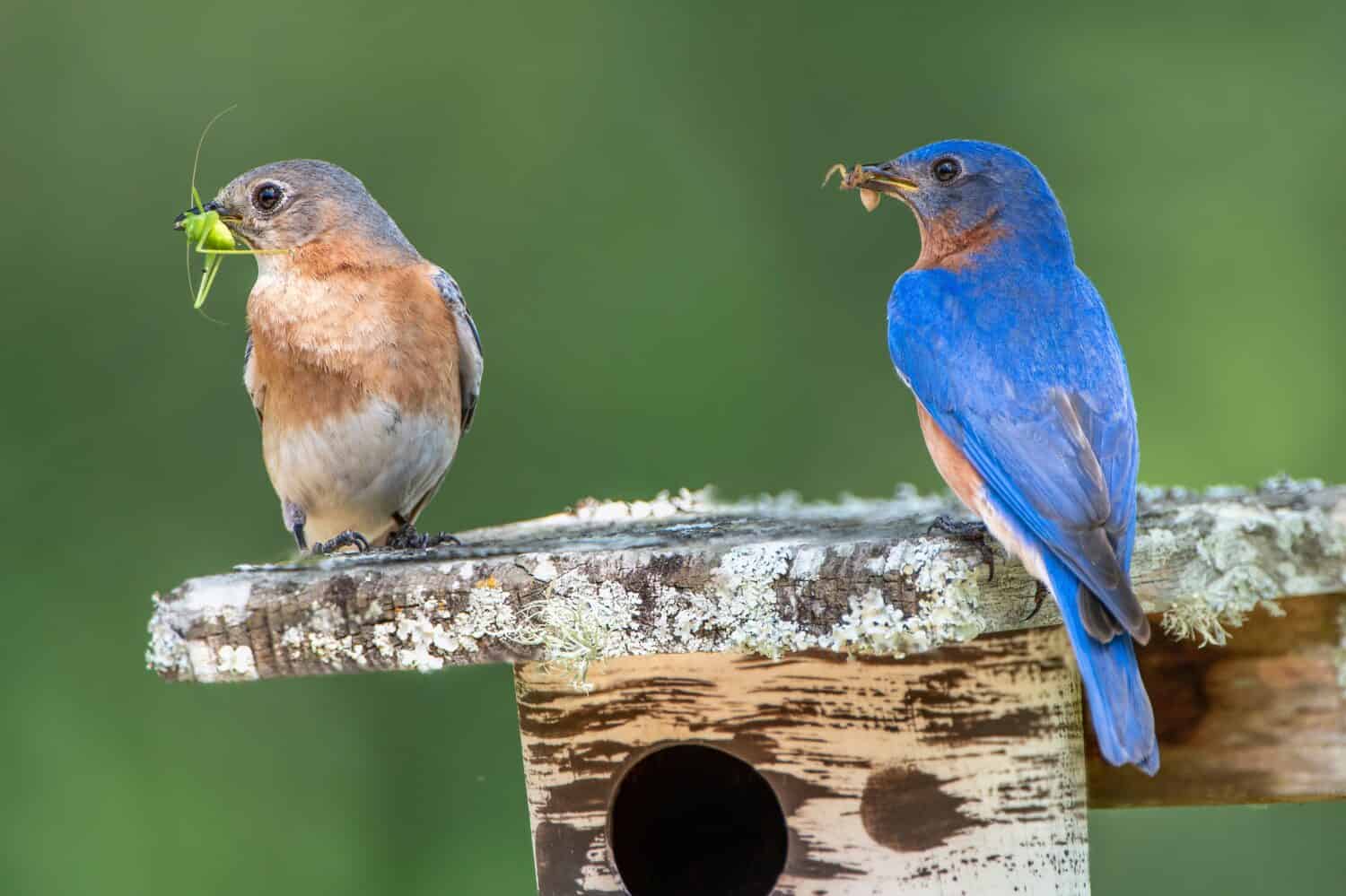
Bluebirds catch their own insects easily enough, but you can still offer some of your own.
©Bonnie Taylor Barry/Shutterstock.com
Yes, bluebirds can catch their own insects and other prey. But if you happen to swat a cricket or spider, or accidentally step on a tiny lizard, you can throw it in the feeder. You could even go so far as to offer frozen pinky mice purchased at a pet store, if you happened to have any extra. Just make sure you don’t offer dead insects that have been poisoned. You do not want to pass insecticides along to the bluebirds that visit your feeders.
Offer Extras to Nesting Birds
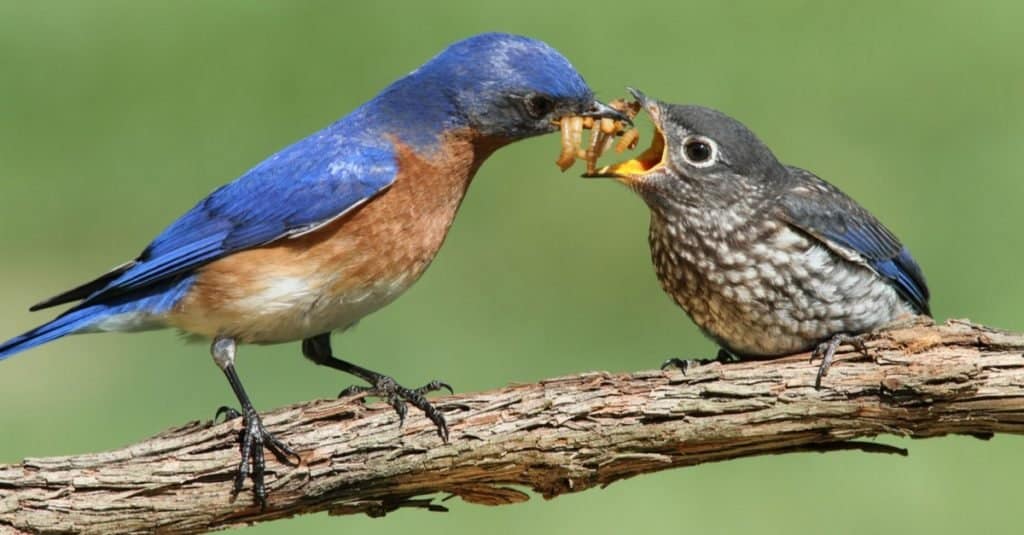
Male Eastern Bluebird (Sialia sialis) feeding his hungry baby
©Steve Byland/Shutterstock.com
If you would like to encourage bluebirds to nest nearby, whether in trees or nestboxes, offer extra treats during nesting season. Baby bluebirds have huge appetites, and both their mothers and fathers work overtime to feed them. If you offer mealworms and other tasty treats like berries and fruits in a feeder near your nestbox, bluebirds may be more inclined to nest there. As an added bonus, you may get the chance to see bluebirds feeding those treasured mealworms to their chicks. That could make all your efforts at feeding the birds so much more fun and exciting!
The photo featured at the top of this post is © Alan B. Schroeder/Shutterstock.com
Thank you for reading! Have some feedback for us? Contact the AZ Animals editorial team.







